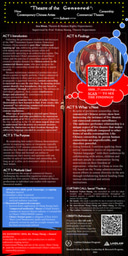Abstract (DRAFT)
[working title: “Theatre of the ‘Absurd’”? How Contemporary Chinese Artists Subvert Censorship]
With authoritarianism globally on the rise, it’s more urgent than ever to understand how the subversive language of dissent gets encoded through artistic expression. With China’s post-Mao era shift towards neoliberal reform, contemporary Chinese commercial theatre has emerged as a vehicle where theatermakers communicate sociopolitical criticism by navigating the boundaries between two government opposing interests: cultivation of a vibrant market-oriented entertainment industry, and suppression of dissent. Through analyzing experimental director Wang Chong’s banned 2016 production of “大先生,” and the queer-themes in Focustage’s ongoing mainstream musical “Apollonia,” this project argues that the malleability of audience engagement, an inherent feature of live performance, enables China’s diverse commercial theatre scene to be a vital platform for pushing the perceived boundaries of censorship. Guided by Wang’s “New Wave Theatre” manifesto and applying Hye Won Kim’s discussion of “compressed modernity” theory in South Korea to a Chinese context, this study interprets how these productions and their theatre practitioners work with audiences to promote provocative subject matters within China’s current capitalist-censorship society. By analyzing audience engagement and performance choices across “大先生” and “Apollonia,” as well as interviewing theatre practitioners (like Wang himself) on their production and performance processes, this study reveals how Chinese artists imbed socio-political themes into pieces that transcend content-restriction and government regulation to remain commercially viable. The insights from these case studies contribute to an understanding of art as a tool anyone can use to express their beliefs in spite of oppression. As long as art is alive, so is peoples’ ability to express their beliefs—no matter what form that may take.



Please sign in
If you are a registered user on Laidlaw Scholars Network, please sign in